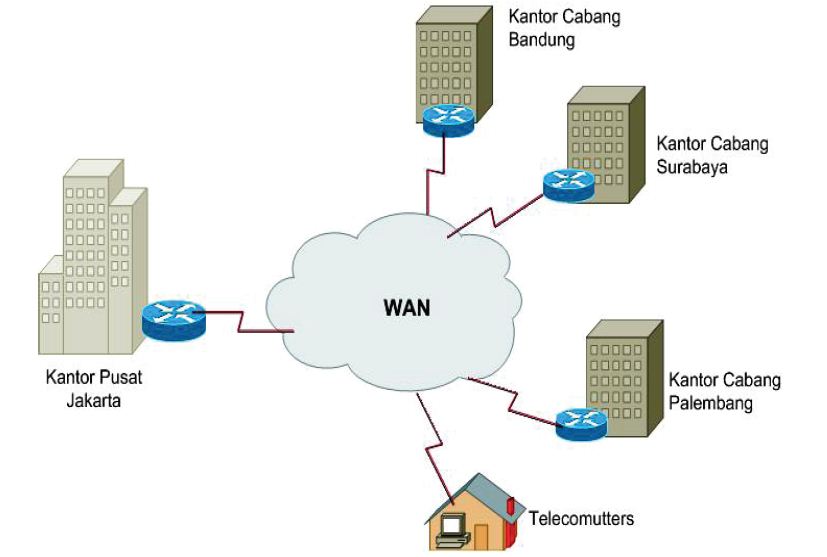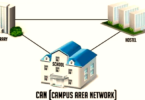What Is WAN? How Wide Area Networks Function
WANs provide employees with the ability to work remotely by connecting to their company network through broadband, LTE wireless and multiprotocol label switching (MPLS) connections.
Without a wide area network solution provider like Verizon, videoconferencing with people in other cities would not be possible; nor could data backup to another office be managed remotely from your home, nor could you manage operations of self-driving cars from home. Without the technology behind such connectivity, you wouldn’t have these capabilities!
Network Architecture
WAN connections span long distances, the most famous being the Internet, which connects all computers globally through secure channels. Businesses and organizations utilize WANs for various reasons, including global collaboration among colleagues or working remotely while keeping company data centres connected.
As WANs are large-scale network solutions, they require specialized hardware and software in order to operate effectively – this may result in higher costs for companies using them. Additionally, third-party service providers often power WANs – this means disruptions could happen if their provider experiences issues or malfunctions.

What Is WAN? How Wide Area Networks Function
A wide area network (WAN) can be built using various networking technologies, including leased lines, private networks and broadband Internet access. Virtual networking technologies can also create WANs; these involve software or applications that create a network on top of another rather than connecting directly. These overlay networks may be useful for specific applications or security features not present on underlying networks.
WANs serve the primary function of providing reliable, secure connections among business locations. In many instances, this allows employees to work remotely while still accessing critical data like their colleagues in-office – for instance, a marketing team in Boston could collaborate with manufacturing teams in New York and customer services teams in Chicago via video conference calls and emails.
A central IT department can use the Wide Area Network (WAN) to oversee traffic across it, as well as implement Quality of Service (QoS) settings that prioritize certain data types. A WAN also helps cut IT expenses by eliminating the need for dedicated lines between multiple offices.
Though not necessary for every business, wide area network (WAN) connections can be invaluable for organizations with an international presence or remote workforce. They also enable expansion to other areas with less investment required than local area network (LAN) expansion.
Leased Lines
A wide-area network (WAN) consists of an interconnected set of dedicated and secure lines connecting different networks, providing businesses with a way to share information across offices and locations – whether within one city or across countries. Businesses use WANs as part of their operational efficiency plan as they also provide essential public services, like banking and shopping. There are various types of WANs with specific requirements or infrastructure needs – for instance, NHS uses one called HSCN to store personal medical data.

At its core, a vast area network (WAN) can be thought of as a system of local area networks (LANs) linked together through dedicated or broadband connections. A WAN solution connects these LANs to a hub that manages inbound and outbound data traffic – usually part of a public telecommunications network such as the Internet – allowing businesses to either pay for individual leased lines between each LAN location or plug into public telecommunications networks like this one – imagine having three locations LANs between Boston, New York, and Chicago where two options would exist – either purchase individual leased lines between them all or make use of public Internet which might prove less expensive!
These Wide Area Network (WAN) connections may include circuit-switched telephone lines, radio wave transmission or optical fiber. Depending on the type of WAN, it may have either a point-to-point topology or multiple hubs with hub and spoke models as more effective ways of connecting multiple WAN locations without unnecessary congestion and optimizing bandwidth usage.
No matter the scale or distance of a WAN, physical barriers still limit data transmission speeds. While several hundred milliseconds may seem inconsequential to human perception, they can have significant ramifications on performance. That is why WAN technology employs several strategies to optimize traffic flow, such as deduplication, compression and caching to maximize traffic efficiency.
Some WAN technologies are owned and managed by carriers. In contrast, other technologies known as Customer-owned Equipment (CPE) are managed by you or your IT team and typically include networking hardware or devices located in your office environment, such as telephones, routers and virtual private network hardware. Your IT team oversees CPE management to optimize network performance in line with business needs.
CPE
WAN networks are more intricate than local area networks (LAN). They connect devices across large geographic regions and enable faster communication among remote locations.
A Wide Area Network, or WAN network, is used by many organizations and businesses to connect their different computer systems. A bank uses its WAN to link branches and ATMs with its main office – but such networks can span an entire region, country or even continent!
Customer premises equipment (CPE), comprising routers, switches, and leased lines, is known as customer premises equipment (CPE). CPE may belong to either the WAN service provider or customer; depending on the service model selected, it may also be installed either onsite or offsite – typically offsite in the case of managed WANs.
Wide area networks (WAN) refer to networks that utilize comprehensive area networking technologies like the Internet as its foundation. A WAN connects large numbers of individual computers, making all world information easily available and accessible to anyone with internet access.
Traditional Wide Area Networks (WANs) were constructed using expensive leased lines; however, new technology now offers alternatives, such as Software Defined Wide Area Networks (SD-WAN). SD-WAN is an approach to making WAN architectures more straightforward to deploy, operate and manage while increasing data transfer efficiencies by shifting traffic onto less costly network links when possible.
A wide area network (WAN) can be secured using firewalls, VPNs and other technologies, network security services from WAN service providers or managed either internally or outsourced to third parties depending on its size and complexity.
As opposed to local area networks (LANs), which rely on physical connections between devices, wide area networks (WANs) rely on data transmission over distance to connect devices. Unfortunately, this means there can be inherent restrictions in speed and reliability – increasing network speeds requires using appropriate hardware and connections as well as network performance optimization tools that reduce how much data travels across WAN links, techniques like deduplication, compression, caching, etc. can all help lower infrastructure costs while improving application performance.
Security
Security measures provided by a wide area network (WAN) are an integral component of its overall functionality. For instance, this may include encryption to protect sensitive information from unapproved access as well as firewalls to stop intrusions from outside sources. Furthermore, network traffic monitoring services allow administrators to identify potential issues before they become full-scale issues.
A WAN can support an organization’s varying bandwidth requirements while meeting application performance thresholds, allocating precise bandwidth volumes per application in the network. Furthermore, traffic shaping techniques allow it to prioritize time-sensitive applications like VoIP over less crucial ones like email.
No matter their industry or sector, businesses that wish to expand into multiple locations require a means to connect all these locations seamlessly. The wide area network (WAN) is an ideal way to do that. Through it, organizations can relay information between staff, students, buyers and suppliers all over their network – not only connecting staff members from one location but also covering multiple geographic regions at the same time.
There are various solutions for creating a Wide Area Network (WAN), but choosing the optimal option for a business will depend on factors like its budget, data types to transport and whether or not it will be private or public networked. A leased line may provide the most cost-effective connection; however, broadband internet can also be used.
Businesses looking for public WAN connectivity options have several types of connection types they can select from, including MPLS and LTE. Of the two options available to them, LTE is more scalable; its infrastructure was specifically created to support millions of endpoints easily.
With the rise of cloud computing, businesses require more agile and responsive WAN architecture to meet their ever-evolving infrastructure demands. Infoblox is a leading provider of next-level DNS and network management, helping businesses prepare their WANs for success using secure and reliable managed services. Utilizing cutting-edge networking technology, we can assist your company on the road toward creating an environment that offers faster speeds, greater robustness, and automation capabilities and is ready for business applications of all types.




